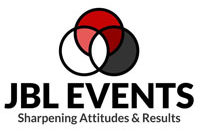Public Speaking

Speaking Publicly: The Basics (101)
Imagine the ability to share your ideas or directions in a manner that’s clearly understood and received in the most positive manner, and building bridges to boot. You will learn techniques as simple as “ABC” to hone the subtle art of successful communication. You will learn to:
- Examine the communication process for transferring thoughts and ideas
- Understand the complications that lead to miscommunication
- Implement reflective feedback to ensure effective receipt of the messaging
- Use techniques that can turn assumptions into facts
- Choose the words or phrases that trigger positive reactions
- Implement simple tools that warn you of potential conflicts
- Minimize or repair the damage when communication goes awry
Speech Writing Made Easy (201)
Successful communication is impossible if the message isn’t received with the intended purpose. It is helpful for the listener/receiver to be open, attentive, interested and aware. You will learn to:
- Understand the basics of successful communication
- Define Active Listening and why it matters
- Learn a Chinese perspective on effective listening
- Overcome the barriers that impede communication success
- Use FOUR steps to enhance your active listening skills
Enhancing Your Speech (301)
Conflict is inevitable and is often created or complicated by ineffective communication. It is important to proactively identify conflict and seek to minimize and address its causes to seek solutions that will build bridges of trust, cooperation and mutual collaboration. You will learn to:
- Understand the impact of emotions in communication
- Use techniques for identifying conflict ASAP
- Place the proper focus of responsibility ___
- Create an atmosphere that improves receptivity to communication
- Choose the best methods for investigating conflict and avoiding the pitfalls
- How to get them to see that they’re wrong (but still seem like you care).
- Explore effective action when you’re (emotionally) triggered
- Use a simple 3-step formula to get opponents to open up to your perspective.
Presenting Virtually (401)
Even prior to the Covid pandemic, the use of virtual meetings has grown significantly as important communication tools for people who can’t be in the same environment at the same time. There are many advantages to this new approach to cost-effective meetings that can increase productivity and results. But this is dependent on mastering initial technical challenges and learning to maximize presentation techniques within this unique environment and improve opportunities for quality interactions and meeting outcomes. You’ll learn to:
- Examine and enhance lighting & visual perceptions, audio/vocal quality
- Use a preparation checklist: Equipment (microphone, speakers/headphones, camera, bandwidth)
- Screen-sharing using impactful slide shows or playing videos
- Effectively use the online tools (chat, annotation, pinning, etc.)
- Overcome the barriers that can separate engagement between you and the audience
Adding Vocal Variety (501)
Like it or not, virtual communication and meetings are here to stay, but that doesn’t mean we can’t be productive and use this time effectively. Meetings should be an important opportunity for groups and teams to share ideas, make decisions, report on progress and address the needs that facilitate success.
- Examine and enhance lighting & visual perceptions, audio/vocal quality
- Use a preparation checklist: Equipment (microphone, speakers/headphones, camera, bandwidth)
- Screen-sharing using impactful slide shows or playing videos
- Effectively use the online tools (chat, annotation, pinning, etc.)
- Overcome the barriers that can separate engagement between you and the audience
Mastering Impromptu Responses (601)
Like it or not, virtual communication and meetings are here to stay, but that doesn’t mean we can’t be productive and use this time effectively. Meetings should be an important opportunity for groups and teams to share ideas, make decisions, report on progress and address the needs that facilitate success.
- Examine a variety of approaches and structure to a sharp impromptu response
- Understand the five components of a concise, impactful and memorable response
- How to look and sound confident (even if that is contrary to your internal feelings
- A simple 4-step approach to organizing a sharp impromptu response
- How to enjoy the challenge of creative responding
